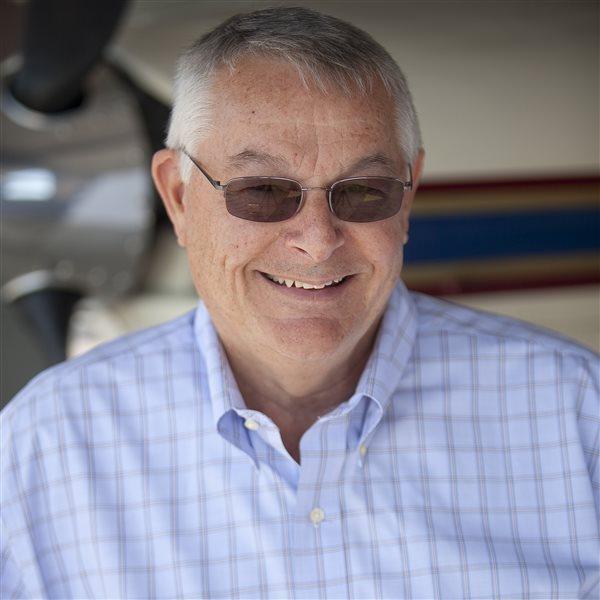 New models continue to flow from the fledgling light sport aircraft (LSA) industry without any sign of the long-expected shakeout that was supposed to reduce the number of manufacturers to five or 10 by this time. Instead, there are 67 companies offering 91 approved light spot models.
New models continue to flow from the fledgling light sport aircraft (LSA) industry without any sign of the long-expected shakeout that was supposed to reduce the number of manufacturers to five or 10 by this time. Instead, there are 67 companies offering 91 approved light spot models.
Still, sales are slower than expected, with the FAA recording less than half of the expected 1,000 registrations of new LSA aircraft in 2008, said Dan Johnson, chairman and president of the board of the Light Aircraft Manufacturers Association. Johnson estimated that 70 models were shown at the U.S. Sport Aviation Expo in Sebring, Fla., from Jan. 22 through 25. They are from manufacturers all over the world, including Brazil, Germany, Italy, and the Ukraine.
Demonstration flights filled the skies above Sebring with powered parachutes, floatplanes, tailwheel aircraft, and tricycle gear aircraft. LSA are allowed only two seats and are limited to a cruise speed of 120 knots and a gross weight of 1,320 pounds (slightly higher for LSA floatplanes).
Rans, one of the giant kitplane companies with 4,500 sales during the history of the company, now offers three models of factory built LSA including a tailwheel model for $95,000.
For all LSA in general, the average price out the door with most commonly ordered options is $120,000, Johnson estimated. Prices can reach $145,000 with luxury interiors, autopilots, and glass cockpits. Many can be ordered with older style analog instruments to reduce the cost. The price of the aircraft remains a limiting factor according to many who visited the Sebring show, but LSA are starting to show up in the rental fleets around the country.
At past shows, the most interest continues to come from pilots who anticipate the day when their FAA-approved medical certificate may be denied. Those pilots still form an important part of the LSA market. Jim Leach, owner of Windward Aviation in Lantana, Fla., specializing in repair of larger four- and six-passenger aircraft, said he was inspired to became a Tecnam dealer recently because his customers are starting to worry about renewal of their medicals. As long as a pilot’s most recent medical certificate has not been denied, he or she may fly an LSA using their driver’s license. (Pilots with approved medical certificates retain their full private pilot privileges when operating an LSA.)
But this year there was a new breed of consumer kicking the tires at Sebring. Middle-aged, healthy people who had always wanted to fly are realizing that dream through the LSA movement.
Lower operating costs of the LSA are attracting another segment of existing pilots. A husband-wife team living in Alaska, both of them airline pilots, decided to sell their beloved but little-flown Cessna 180 tailwheel aircraft to get a Flight Design CT because it is far more economical. Neither has difficulty maintaining a medical certificate. The majority of LSA operate on a fuel burn of five gallons per hour or less.
Visitors interviewed in an informal poll most often commented that they feel the top brands are the Flight Design’s CT, Tecnam, and Remos. As one dealer for the Lambada motor glider LSA and Samba LSA noted, many of the models look alike and face tough competition. His Lambada motor glider is so different that he has that corner of the market to himself. Most LSA at the show now offer luxury interiors, glass or analog cockpits, and autopilots. Many are on their second or third round of refinements based on market demands.
Manufacturers have rapidly refined their models compared to those offered four years ago when LSA first entered the market. All the six aircraft flown for this report (a Flight Design CTLS, a 2009 model of the Remos GX, the Paradise P-1, the Rans S-7 tailwheel and S-19 with tricycle gear, and the Samba) exhibited docile flight characteristics. The pilot of a Rans S-7 tailwheel aircraft demonstrated that with no pilot input, the aircraft raises its tail when it feels like it on the takeoff run, then lifts off by itself and assumes the correct pitch angle and airspeed. The S-19 showed the same characteristics, dramatically reducing the pilot workload. The Remos aircraft had the control harmony usually found only in high-end aerobatic aircraft. The CTLS has been the market leader since the first LSA were offered. The Brazilian Paradise P-1 is ruggedly built.
(Just as this report was prepared on the last day of the show Jan. 25, one of the Remos aircraft previously flown by this writer was involved in a fatal takeoff accident. No details were available at press time.)
There are differences that will determine the LSA winners. Some are easier to get into than others (head first, posterior later). Some have a single hand brake only on the pilot’s control stick, while others have a brake handle between the seats or toe brakes on both sides. Others have control yokes rather than sticks. Despite similarities in appearance and option packages, there are enough differences to give buyers a clear choice.
The opening day at Sebring set a record for attendees, with Cessna Aircraft, Flight Design, Rans, and other company officials reporting high traffic. One said customers who saw their investments in the stock market dropping withdrew the money and bought an LSA, expecting to recover most of it, if not all, when it is sold. Some customers came to the show with certified checks, and Flight Design reported a sale, possibly two, by the second day.



